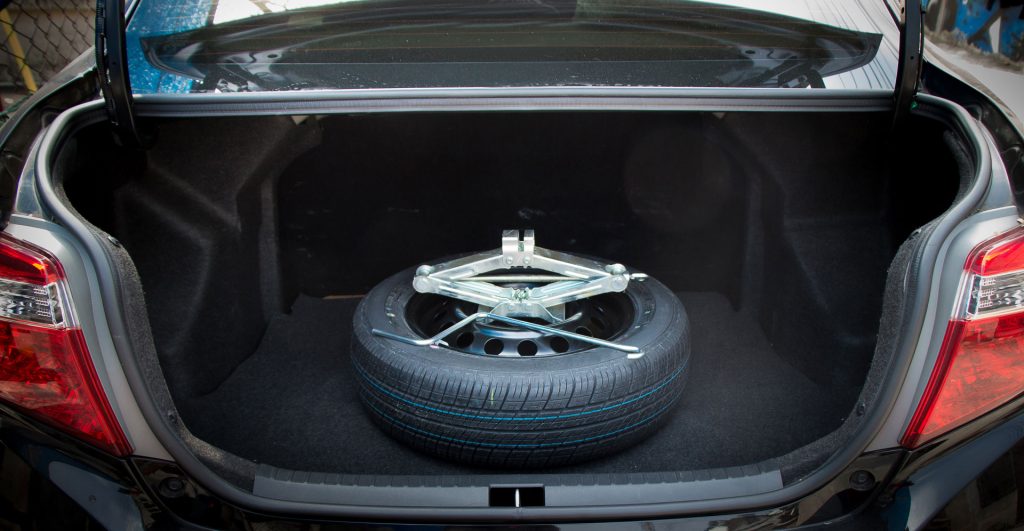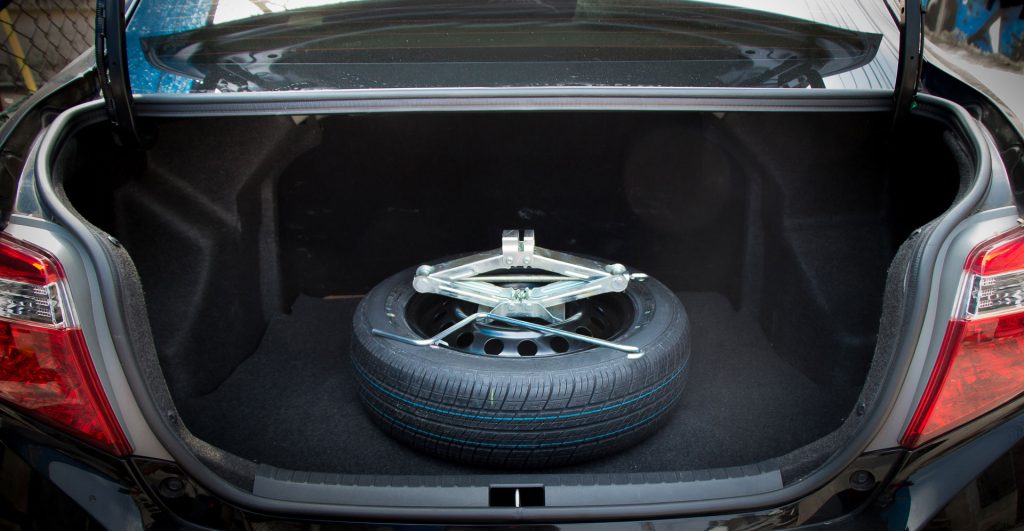Tire Types (Summer, Winter, All-Season, Spare Tire)
When a vehicle drives down the road, most people are likely to notice its colour, make and model and possibly the person in the driver’s seat. They might not even notice the tires, but these features are essential for running a vehicle. For vehicle owners, knowing about tires is important for keeping the vehicle running safely and smoothly on the road. Choosing the right type can make a very large difference for drivers.
Every vehicle comes with a set of tires already installed, with the size and design based on the type of vehicle. The tires on a small car are very different from the ones on a large truck, and some have special decorations that distinguish them from others. Most vehicles have four tires, but large ones can have eight or more. Some tires have special decorative features, but most of them are plain black. Although the wheels of a large truck may look quite different from the wheels of a small car, they have the same basic structure and purpose.
All tires share certain similarities, but they still have many differences, depending on their specific purpose. The surface of every tire has bumps and ridges called treads which help to keep the vehicle on the road. These treads are designed to grip the road as the vehicle moves forwards or backwards, keeping it from skidding or from sliding off the road.
Types of Tires
However, not all tires are the same but are rather designed for different situations. As Jessica Shea Choksey writes in her J.D. Power article, tires come in three main types: summer, winter and all-season. In addition, most vehicles have a spare tire to use in case of emergency. Each type of tire is useful in its own way, depending on how and when the driver uses the vehicle.
Although vehicles come equipped with a set of tires, drivers can choose to buy the type that best suits the climate and the type of driving they do. Many people have a set of tires for winter and another for summer, while others stay with all-season tires throughout the entire year. Each type of tire has its advantages, helping to keep vehicles driving safely for the conditions that they encounter.
Summer tires are good in relatively dry and warm conditions. They have a shallower tread than the other types of tires, which helps the vehicle to move faster on dry roads. Since even the driest areas still receive rain, summer tires also have grooves that help to direct water away from the rubber and back onto the road. A wide centre channel helps to keep the vehicle stable on the road, while large contact areas at the outer edges of the tires help with turning corners or changing directions.
As their name suggests, summer tires work best in warm weather. According to the Wheels.ca website, summer tires are good for temperatures of 7 degrees Celsius or higher. Below that temperature, the rubber tends to harden, making the vehicle difficult to control. At temperatures below -10 degrees Celsius, summer tires are no longer useful. The vehicle then needs a different type of tire to be able to handle the conditions on the road.

When the weather turns cold and snow is on the ground, winter tires are the best option for many vehicles. As the Wheels.ca website notes, winter tires are made with a rubber mixture that helps keep them flexible at temperatures below freezing. In addition, the tires have many more tread blocks, channels and grooves than the ones designed for summer, helping the tire to grip the ice while moving loose snow away for better stability.
The features of winter tires are designed to work in cold weather when the roads often have a layer of ice and snow. As the tread blocks make contact with the road, they are compressed, creating heat. The same process happens with the grooves and channels as they touch the road. While this heat is useful on cold pavement in winter as it keeps the tires flexible, it can cause problems when the weather warms up. As soon as the temperatures are high enough, vehicle owners should be sure to have the winter tires removed and summer tires put on the vehicle.
Both winter and summer tires are designed to deal with the challenges of the season. Winter tires are designed to wobble slightly as they search for the best grip on the road. While this feature works well with the treads, grooves and channels to provide grip on ice and snow, it can cause problems on summer roads, where the heat created by winter tires can cause a blowout. Underinflated tires can also experience the same problems. Changing to summer tires is important when the weather warms up sufficiently.
Using tires specifically designed for winter or summer is the best option in much of Canada for the best control of the vehicle in all kinds of weather. However, a third option is to use all-season tires. These tires include some of the features of both winter and summer tires, and they are best in fairly moderate climates without the extremes of heat in summer and cold in winter. These types of tires can be useful even in areas with these types of temperature swings, but they are less effective than tires specifically designed for the cold or heat.
Choosing Tire Types
In much of Canada, using both winter and summer tires is normally the best option, as they are designed for the weather that drivers are likely to encounter. For some people, however, all-season tires are the most convenient and are sufficient for what they need. Someone who drives mainly short distances on well-plowed streets in cities or towns, for example, may find that all-season tires work well. A driver who frequently drives on country roads or highways, however, might prefer the extra safety of winter and summer tires.
Convenience and expense are often factors in the choice of tire type. Someone who is mechanically inclined might be able to change a set of tires in a home workshop, but most people need to take the vehicle to a service station, where a professional mechanic can change the tires using the right tools and techniques.
Tire changes every half year can be expensive and leave the owner without a vehicle for a day or two. Keeping one set of all-season tires on the vehicle for the entire year is more convenient than making the changes each year, but it also means that those tires take all of the wear and tear of the road. Those tires can often wear out more quickly than if the vehicle has a separate set of tires for winter and for summer.
People’s choice of tires can depend on their style of driving and level of skill, as well as where and when they drive. New or inexperienced drivers may need the extra stability of snow tires in winter, for example, to be able to control their vehicles in icy or snowy conditions. Even other drivers may feel uncomfortable driving on all-season tires, especially in relatively remote areas where help can be hard to find.
Studded Tires
In northern Ontario, drivers have another option for winter tires. According to Ontario’s Regulatory Registry website, a variety of wheels called studded tires are allowed in specific areas of northern Ontario over the winter months. As the Driving.ca website explains, studded tires have metal studs embedded in them to help grip the ice better than any other type of tire. They can be helpful for driving on icy surfaces. However, the studs can cause damage on the road surface, and they are not allowed in many areas of the country.
Most vehicle owners also keep a tire that they hope they will never have to use: the spare tire. Usually kept either in the trunk or at the back of the vehicle, spare tires are important safety features in any vehicle. If another tire goes flat, the driver can substitute the spare tire for it and keep on driving. However, it is important to replace that tire with a regular one as soon as possible, because spare tires are designed as only a temporary solution. Normally, they are smaller than regular tires, which could make controlling the vehicle extremely difficult.

Maintenance and Replacement
Like any other part of a vehicle, tires need maintenance. If the vehicle drives over a sharp object, a tire can go flat suddenly. Even under normal circumstances, tires can lose air and gradually go flat. Ordinary use can also cause treads to wear down, making them less effective than on newer tires. Treads have an important role in safe driving, and using “bald” tires can be dangerous, especially on slippery road conditions.
Vehicle owners should buy new tires when the treads have worn down to a point where they are no longer effective. Drivers should also be sure to check the pressure on their tires regularly and add air whenever necessary.
People may not often think about the tires on their vehicles, but keeping these features working properly is essential for safety and for keeping vehicles running smoothly. All drivers should be sure to pay attention to the tires on their vehicles.
